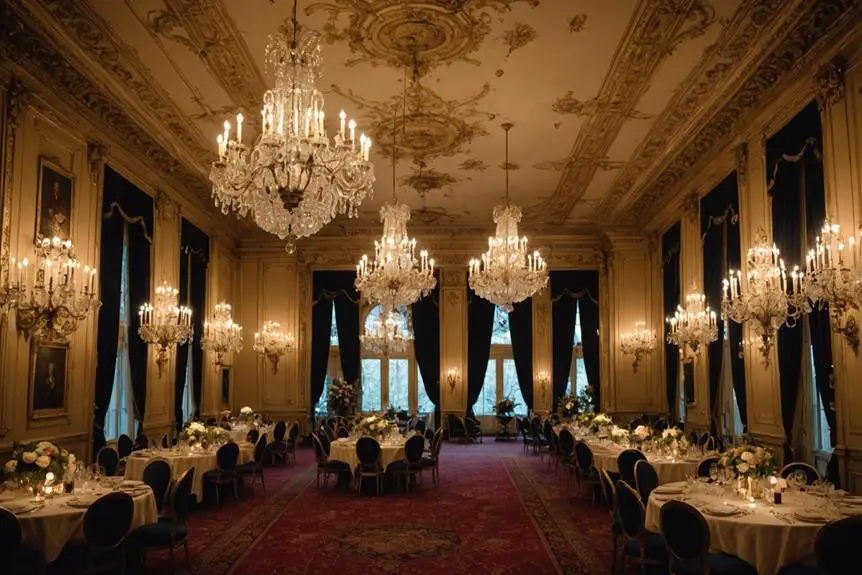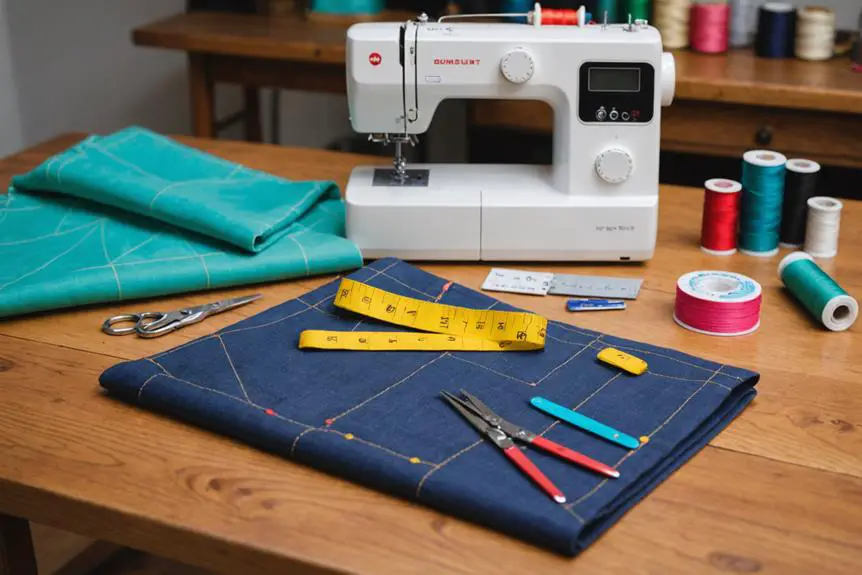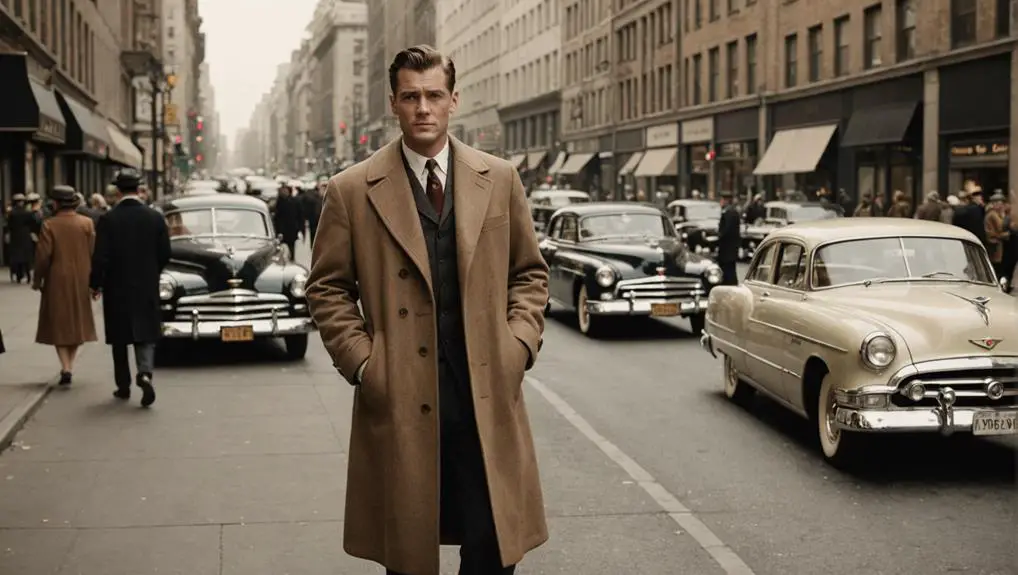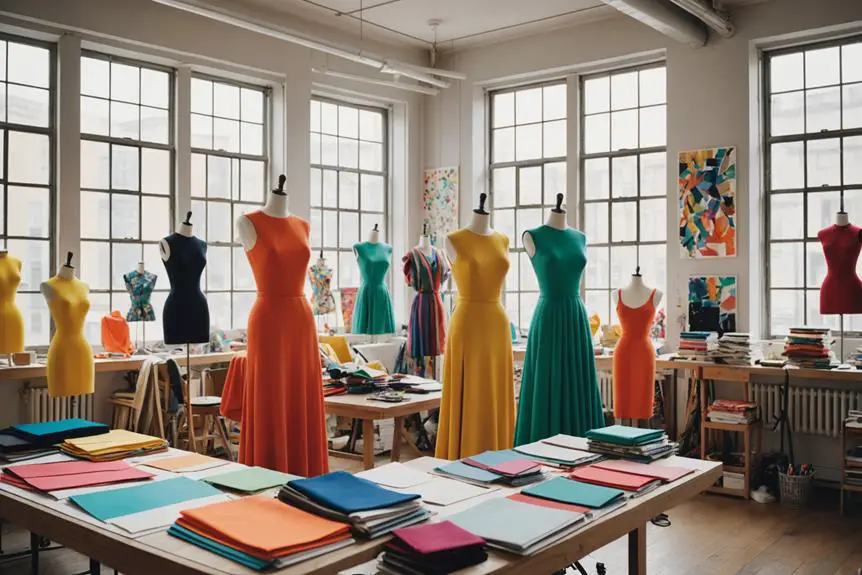You might find it intriguing how the costumes in "The Young Victoria" not only reflect Queen Victoria's personal growth but also serve as a lens into the broader historical context of the era. With about 35 outfits designed by Sandy Powell, each piece tells a story of change from youthful exuberance to regal sophistication. These garments aren't just fabric; they're symbols of power and identity that provoke thoughts about the intersection of fashion and history. What might be even more compelling is how these choices influence our perception of the characters and their relationships.
Overview of Costume Design
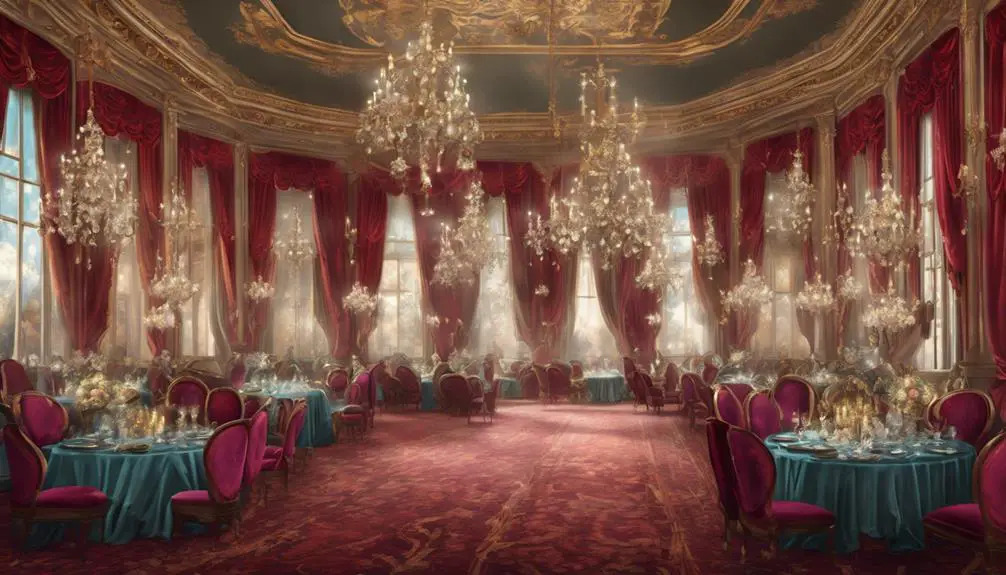
Costume design plays an essential role in bringing *The Young Victoria* to life, immersing viewers in the rich historical context of the era. Created by the talented Sandy Powell, whose work earned an Oscar, the costumes reflect a deep commitment to authenticity and detail. With around 35 costumes designed specifically for Queen Victoria, you'll notice a fascinating shift from the vibrant styles of the 1830s to the more restrained and mature fashions of the 1840s.
Powell drew inspiration from historical clothing found in Kensington Palace, royal portraits, and Victoria's own diaries, ensuring that every piece embodies the essence of the Victorian era. The costumes feature exquisite silk fabrics and intricate undergarments like corsets and petticoats, which were essential for achieving the desired silhouettes. You'll be captivated by the evolution of styles, from the dramatic puffy sleeves to the elegant, simpler designs that signify Queen Victoria's personal growth throughout the film.
Notable pieces include a frothy yellow dress worn for a royal birthday celebration and a dark purple mourning gown that captures significant fashion trends of the time. Each costume tells a story, not just about fashion, but also about the life and emotions of Queen Victoria herself. As you watch, you can appreciate how these designs enhance the film's narrative, drawing you deeper into the world of the young queen and her journey towards becoming a powerful monarch.
Evolution of Victoria's Outfits
As Victoria navigates her journey from a naive young girl to a formidable queen, her outfits reflect this profound change. The evolution of her wardrobe is not just about fashion; it's a visual representation of her internal growth.
- Early costumes in vibrant colors capture her youthful charm typical of the 1830s.
- As the story unfolds, her attire shifts to darker, more assertive hues, signaling her rise as a powerful monarch by the 1840s.
- Key moments of confrontation, particularly with John Conroy, showcase significant costume changes that highlight her maturation.
In the beginning, you'll notice Victoria in lovely dresses adorned with puffy sleeves, embodying the innocence of youth. These vibrant colors mirror her optimistic spirit, making her appear approachable and endearing. However, as she confronts the challenges of her position, her wardrobe evolution becomes apparent. You'll see a change to structured silhouettes—outfits that convey authority and confidence. This shift not only signifies her growing responsibilities but also her determination to assert her power.
In the film's later scenes, Victoria's costumes emphasize her maturity and motherhood. Elegant dresses reflect her dual role as a queen and a nurturing figure, showcasing her ability to balance the demands of leadership with the tenderness of a mother. This stunning wardrobe evolution beautifully encapsulates her journey, making you appreciate the artistry behind each costume choice and its significance to Victoria's story.
Historical Inspirations Behind Costumes
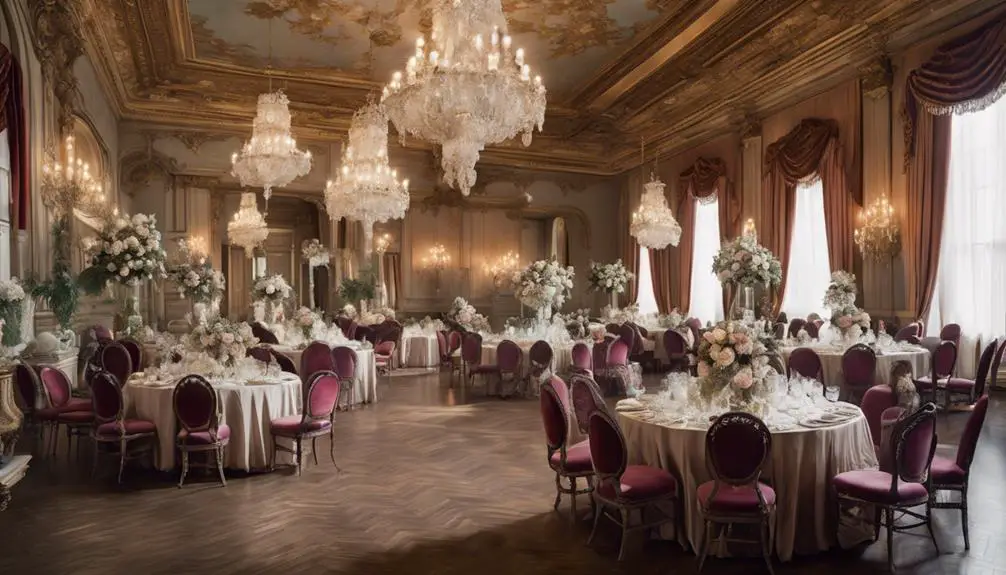
The historical inspirations behind the costumes in *The Young Victoria* are deeply rooted in authentic sources, making them both visually stunning and true to the era. Costume designer Sandy Powell meticulously drew from historical clothing housed at Kensington Palace, utilizing extant garments to inform both scale and design. This attention to detail guarantees that each piece reflects the elegance of the Victorian era, while also serving the film's romantic narrative. The careful craftsmanship of these costumes mirrors the vintage Chanel craftsmanship, showcasing the value of quality in fashion history. Royal portraits of Queen Victoria played a pivotal role in shaping the costumes, as they provided insight into her style during the 1830s and 1840s. By studying these portraits, Powell captured the essence of Queen Victoria's wardrobe, guaranteeing that the costumes resonate with authenticity. Additionally, Victoria's diaries served as valuable resources, revealing her personal preferences and the societal context that influenced her wardrobe choices.
Notable pieces, like the coronation gown, were crafted based on documented historical events, showcasing the dedication to recreating significant moments in Victoria's life with precision. The costumes not only celebrate the grandeur of the time but also weave a rich tapestry of emotional depth throughout the film.
In blending historical accuracy with artistic interpretation, the costumes in *The Young Victoria* achieve a remarkable balance that enchants viewers, transporting you back to a pivotal moment in British history while honoring the legacy of a remarkable queen.
Key Costume Features and Styles
In *The Young Victoria*, the key features and styles of the costumes vividly reflect the evolution of fashion during Queen Victoria's reign. The film's costumes capture the essence of Victorian fashion, shifting from the playful, vibrant colors of the 1830s to the more subdued, assertive hues of the 1840s, paralleling Victoria's journey to power.
- Silhouettes: The early dresses boast ruffles and rounded bodices, while later outfits adopt pointed waistlines, emphasizing the changing styles.
- Undergarments: Corsets and petticoats play an essential role in shaping the silhouettes, enhancing the luxurious appearance of the costumes.
- Character Continuity: The reuse of designs, like Victoria's dark plaid gown in various scenes with different accessories, adds a layer of realism and continuity.
Notable costumes include a frothy yellow dress for a royal birthday, showcasing youthful exuberance, and a dark purple mourning gown that reflects the gravitas of her role. The fine silk fabrics used in these costumes allow for layered looks, enhancing the overall visual impact.
As you explore the film, you'll appreciate how each costume not only tells a story but also serves as a reflection of the broader societal changes occurring during this pivotal time. The careful attention to detail in the colors, styles, and silhouettes creates an immersive experience, helping you understand the complexities of Victoria's character as she navigates both personal and political landscapes.
Supporting Characters' Wardrobe
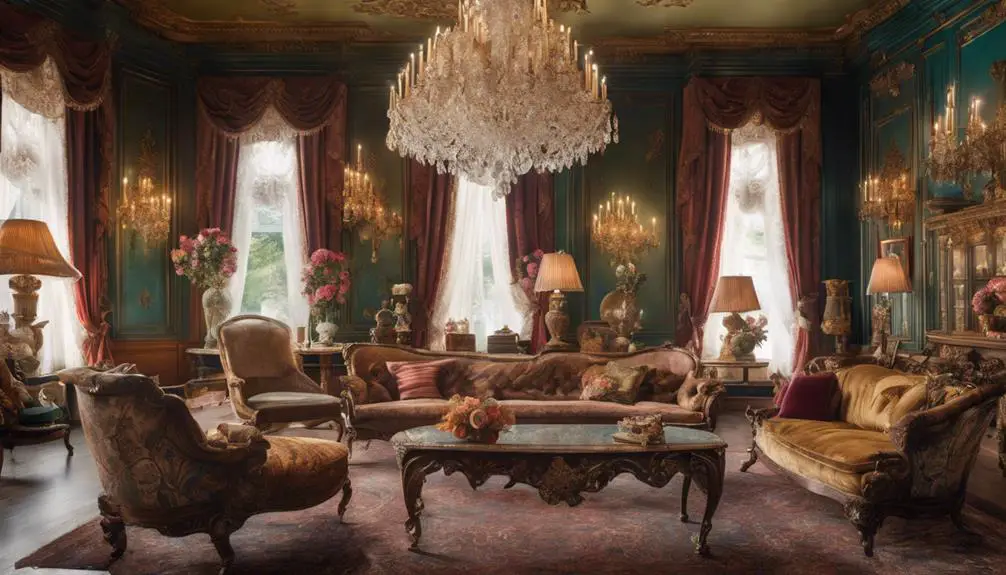
Supporting characters in *The Young Victoria* wear costumes that are meticulously crafted to highlight their royal status and unique personalities. Take the Duchess of Kent and the Dowager Queen, for example; their outfits are designed with exquisite detail, showcasing intricate embroidery and period-appropriate silhouettes that reflect both their character traits and the royal hierarchy. Each wardrobe choice contributes greatly to the film's rich visual tapestry, enhancing the overall historical authenticity of the narrative.
The costumes emphasize the social standing of each supporting character within the Victorian court. For instance, the luxurious fabrics and elaborate designs worn by higher-ranking figures signal their elevated status, while simpler attire may indicate a lower position within the royal family dynamics. This attention to detail not only enriches the film's portrayal of the era's fashion but also creates a visual contrast between the main characters and supporting roles, highlighting thematic elements of power and influence.
As you watch, you'll notice how the supporting characters' wardrobes enhance the narrative, making their roles even more compelling. The thoughtful choices in color, fabric, and design bring to life the complexities of royal life, revealing the intricate web of relationships and rivalries that define the court. In every scene, these costumes serve as a reminder of the characters' social standing and their place within the grand scheme of the monarchy, making the film not just a visual delight but also a fascinating exploration of Victorian culture.
Viewer Discussions and Engagement
Discussions among viewers of *The Young Victoria* often center on the film's stunning costumes, which play an essential role in illustrating Queen Victoria's character development and the historical backdrop. The costume design by Sandy Powell is frequently praised for its artistic choices that enhance both the romantic atmosphere and the historical context of the film. Here are some key points often highlighted in viewer discussions:
- The intricate details and period-accurate designs contribute to a rich visual experience.
- Viewers appreciate how the costumes reflect Queen Victoria's character growth throughout the story.
- Conversations frequently acknowledge the film's historical inaccuracies while still celebrating its engaging narrative.
Fans engage on various online platforms, sharing insights and recommendations for similar films that capture the same essence of historical drama. The mix-and-match approach to costumes not only adds realism but also creates a continuity that helps viewers connect with the characters on a deeper level. Emily Blunt's portrayal of Queen Victoria is further enhanced by the thoughtful costume design, which allows her character to evolve in front of our eyes.
While some discussions touch on the height differences between actors and their real-life counterparts, these points are generally seen as minor distractions in the broader context of the film's narrative. Overall, viewer engagement remains vibrant, fueled by a mix of admiration for the costume design and a desire to explore more stories about historical figures.
Frequently Asked Questions
Who Designed the Costumes for the Young Victoria?
You'll discover that the costume designer expertly tackled historical fashion influences and character wardrobe evolution, steering through period accuracy challenges while considering color symbolism and fabric choice significance, earning costume award nominations for their remarkable design inspiration and cultural representation critiques.
How Many Costumes Were Created for the Film?
For the film, numerous costumes were crafted, highlighting costume creation's historical significance. Each piece reflected character development, fashion evolution, and royal representation, while addressing design challenges. This wardrobe logistics shaped audience perception through color symbolism and cultural impact.
Were Any Costumes Historically Accurate Replicas?
You'll find that many costumes aimed for historical authenticity, showcasing costume details that reflect fashion evolution. The wardrobe symbolism and character representation enhance the Victorian era's royal attire, rooted in thorough historical research for maximum costume realism and cinematic impact.
What Materials Were Predominantly Used in the Costumes?
For the costumes, you'll find silk fabrics and velvet textures combined with lace details and brocade patterns. Cotton blends and embroidery techniques highlight color palettes, showcasing layering styles and historical significance while embodying costume symbolism beautifully.
How Did the Costumes Influence the Film's Reception?
Costume impact considerably shapes audience perception, enhancing fashion symbolism and character development. By grounding historical context in visual storytelling, it evokes emotional resonance, showcasing cultural significance while elevating production value, ultimately leading to critical acclaim for the film.
